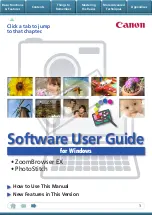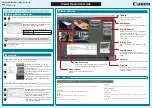
1.
The client initiates a PPP connection with the router.
2.
The router and the client exchange Link Control Protocol (LCP) packets. For
details about negotiating PPP connections, see the
Configuring Point-to-Point
Protocol
chapter in
JUNOSe Link Layer Configuration Guide
.
3.
By using either a local database related to the domain name or RADIUS
authentication, the router determines either to terminate or to tunnel the PPP
connection.
4.
If the router discovers that it should tunnel the session, it does the following:
a.
Sets up a new destination or selects an existing destination.
b.
Sets up a new tunnel or selects an existing tunnel.
c.
Opens a new session.
5.
The router forwards the results of the LCP negotiations and authentication to the
LNS.
A PPP connection now exists between the client and the LNS.
NOTE:
The router discards received packets if the size of the variable-length, optional
offset pad field in the L2TP header is too large. The router always supports packets
that have an offset pad field of up to 16 bytes, and may support larger offset pad
fields, depending on other information in the header. This restriction is a possible,
although unlikely, cause of excessive discarding of L2TP packets.
Sequence of Events on the LNS
The E Series router sets up an LNS as follows:
1.
An LAC initiates a tunnel with the router.
2.
The router verifies that a tunnel with this LAC is valid—destination configured,
hostname and tunnel password correct.
3.
The router completes the tunnel setup with the LAC.
4.
The LAC sets up a session with the router.
5.
The router creates a dynamic PPP interface on top of the session.
6.
If they are enabled and present, the router takes the proxy LCP and the proxy
authentication data and passes them to PPP.
7.
The E Series PPP processes the proxy LCP, if it is present, and, if acceptable,
places LCP on the router in opened state without renegotiation of LCP.
NOTE:
If proxy LCP is not present or not acceptable, the router negotiates LCP with
the remote system.
332
■
Implementing L2TP
JUNOSe 11.0.x Broadband Access Configuration Guide
Summary of Contents for JUNOSE 11.0.X MULTICAST ROUTING
Page 6: ...vi...
Page 28: ...xxviii Table of Contents JUNOSe 11 0 x Broadband Access Configuration Guide...
Page 36: ...xxxvi List of Tables JUNOSe 11 0 x Broadband Access Configuration Guide...
Page 42: ...2 Managing Remote Access JUNOSe 11 0 x Broadband Access Configuration Guide...
Page 204: ...164 Managing RADIUS and TACACS JUNOSe 11 0 x Broadband Access Configuration Guide...
Page 292: ...252 Monitoring RADIUS Relay Server JUNOSe 11 0 x Broadband Access Configuration Guide...
Page 336: ...296 RADIUS Client Terminate Reasons JUNOSe 11 0 x Broadband Access Configuration Guide...
Page 368: ...328 Managing L2TP JUNOSe 11 0 x Broadband Access Configuration Guide...
Page 444: ...404 PPP Accounting Statistics JUNOSe 11 0 x Broadband Access Configuration Guide...
Page 494: ...454 Managing DHCP JUNOSe 11 0 x Broadband Access Configuration Guide...
Page 510: ...470 DHCP Local Server Configuration Tasks JUNOSe 11 0 x Broadband Access Configuration Guide...
Page 556: ...516 Configuring DHCP Relay Proxy JUNOSe 11 0 x Broadband Access Configuration Guide...
Page 616: ...576 Managing the Subscriber Environment JUNOSe 11 0 x Broadband Access Configuration Guide...
Page 674: ...634 Managing Subscriber Services JUNOSe 11 0 x Broadband Access Configuration Guide...
Page 767: ...Part 7 Index Index on page 729 Index 727...
Page 768: ...728 Index JUNOSe 11 0 x Broadband Access Configuration Guide...
















































